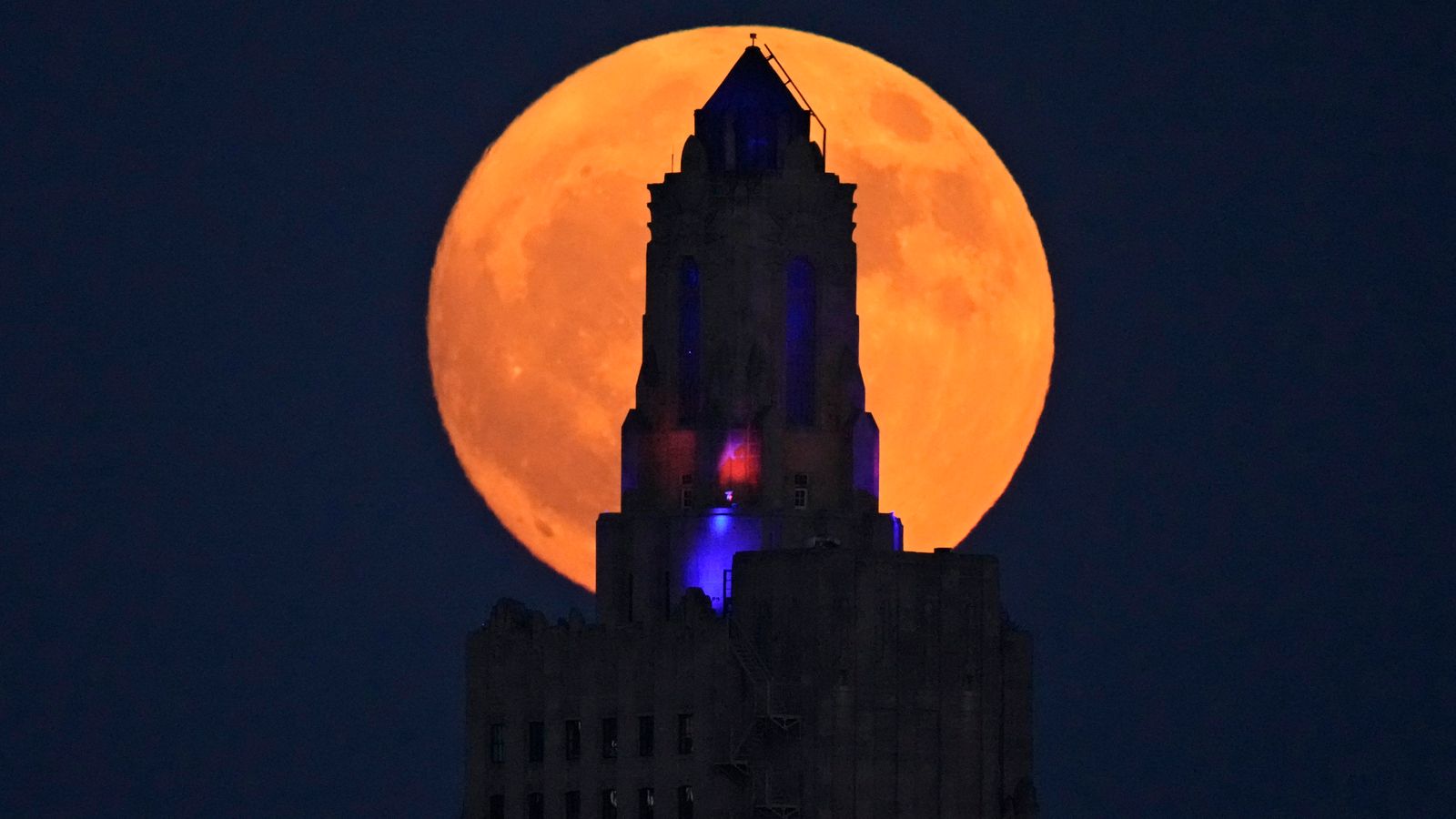The night sky was lit up by a supermoon last night, making the lunar surface appear larger than at any point this year so far.
The striking reddish orb rose above cities from London to Washington DC, as the full moon made its closest pass of Earth during its orbit.
It made the moon seem much bigger and more luminous than usual (a phenomenon known as “moon illusion”) and brightness levels peaked this morning.
But there will be more chances to see the supermoon this week – starting tonight, when it rises at 10.14pm UK time.
What causes a supermoon – and why now?
Don’t let their name fool you, supermoons are a perfectly normal part of the lunar cycle.
It occurs when the moon is at its closest point to Earth while also being full.
A full moon happens once in each lunar cycle, which lasts 29.5 days, and its closest point to Earth is about 360,000 kilometres away. That’s because the moon travels in an elliptical path around our home rather than precisely circular, meaning it’s sometimes closer and sometimes further away.
Supermoons happen a few times a year – the next one on 1 August, with more on 31 August and 29 September.
What do we know about this week’s supermoon?
As it’s happening in July, it’s known as a Buck supermoon.
That’s because each full moon gets a name depending on which month it occurs in; like January’s Wolf moon, February’s Snow moon, and June’s Strawberry moon.
The Buck moon is named after the antlers of a buck deer, which grow new ones at this time of year, having shed their previous pair during spring.
If you didn’t see it on Sunday night or Monday morning, the best time to look again is 10.14pm tonight.
But it will also be visible for a few more nights to come, as supermoons appear some 14% larger and 30% brighter compared to when a full moon is at its furthest point from Earth.
How can I savour the moment?
You won’t need a telescope or any other specialist equipment to see the supermoon – your eyes will do fine, with binoculars more than good enough if you want a closer look.
If you want to take a photo on your phone, make sure you’re using night mode, turn off the flash, and try your best to hold the device steady (a tripod would be ideal if you have one).
As mentioned earlier, you don’t have to wait too long for the next supermoon spectacle if you require an early sleep each night this week, with another to come on 1 August.
Be the first to get Breaking News
Install the Sky News app for free
It’s certainly a shorter wait than the one for the next blood moon, another stunning lunar display that occurs when Earth’s orbit positions it between the moon and sun, blocking sunlight and dimming the lunar orb to a reddish hue.
We got one last November, and won’t see another until March 2025.






















